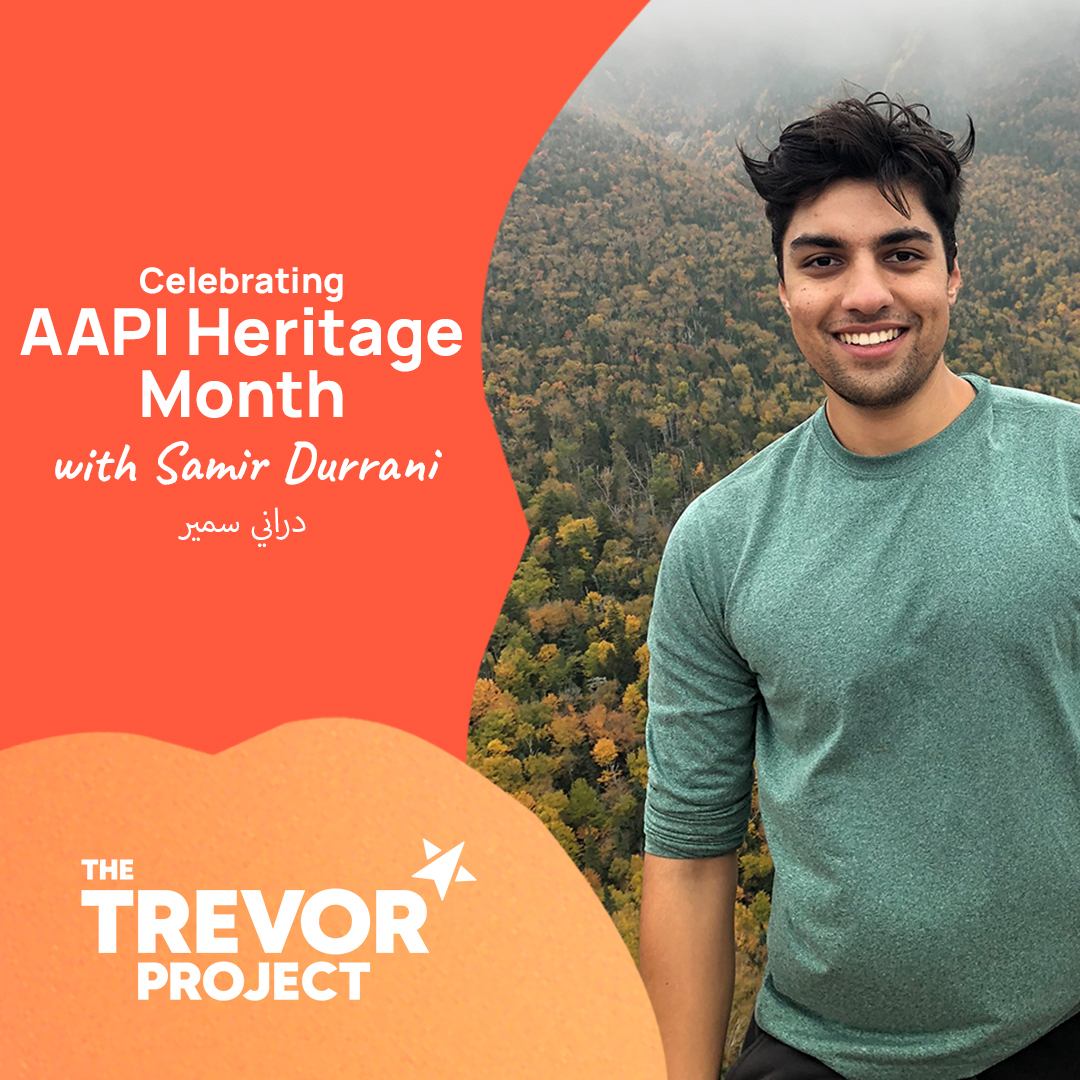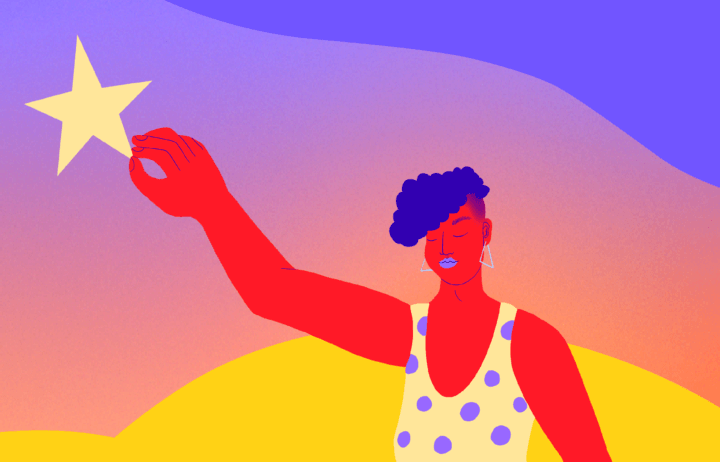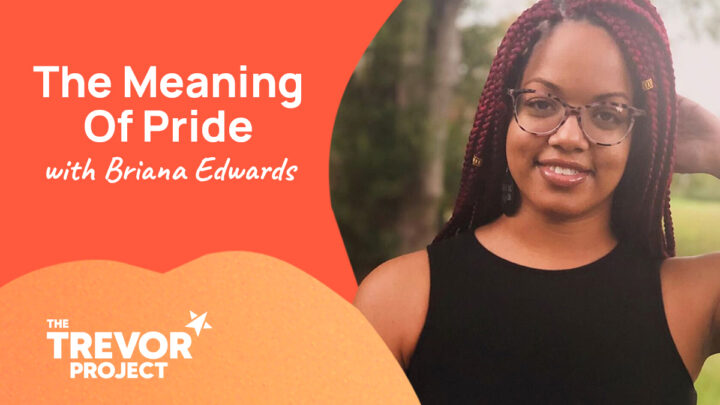The Trevor Project is celebrating Asian American Pacific Islander Heritage Month (May) by honoring the vast diversity and vibrancy of the LGBTQ AAPI diaspora. In honor of this month, we are creating space for our Data Analyst Samir Durrani سمیر دراني to speak on his experiences, the intersections of his identities, and his work at Trevor.
Do you have any reflections on the recent Trevor Project report on the mental health of AAPI LGBTQ young people?
60% of AAPI youth reported they wanted mental healthcare, but did not receive it. In this way, AAPI young people are underserved. Access to healthcare — mental healthcare specifically — must increase for members of AAPI communities. They deserve to thrive and have access to the tools they need in order to be well.
Parental support critically relates to mental health, yet only 20% of AAPI LGBTQ youth report high levels of social support from family. I think about the children of immigrants who feel increased stress about potentially disappointing their parents, who have sacrificed so much to be in the United States. I think of families where love is shown through subtle acts of kindness rather than grand gestures, and speaking openly about queerness is taboo.
Of course, AAPI is a western label which attempts to and fails to encompass half the world. The report shows us, by highlighting the heterogeneity across ethnicities, that different young people experience being AAPI and LGBTQ in completely unique ways. The experiences of Chinese, Punjabi, or Fijian young people differ so greatly that they cannot be painted with the same brush.
What does allyship to the AAPI community look like to you?
Allyship to the AAPI community means understanding the complex histories of AAPI communities. It is important to read about Vincent Chin, the coup d’etat against Queen Lili’uokalani, and the mass surveillance of American Muslims. History reveals patterns that can be unraveled and questioned. Reading AAPI histories and listening to AAPI people, ultimately, gives allies the understanding they need to help systematically face these issues.
A critical element of AAPI allyship is to understand the history of the Black Civil Rights Movement and the critical role of Black civil rights leaders in paving the way for AAPI liberation. Pioneering Black leaders made possible the existence of a prosperous and large AAPI community today. They fought racially motivated quota systems for immigration to the United States, and passed the 1965 Immigration Act which opened the door to a significant influx of immigrants from Asia. Dr. Martin Luther King Jr. spoke bravely against the American war in Vietnam, risking political capital. The present struggle for justice for AAPI people in the United States, too, owes Black women utmost thanks for their activism and pioneering allyship.
What does AAPI/LGBTQ visibility mean to you?
Visibility means uncloaking oneself, and leaning into the joys of being AAPI and LGBTQ.
When I introduce myself, I state my name as well as pronouns: سمیر . Samir. Pronouncing my name, being proud of my name, is an important step towards being fully and unapologetically myself and visible. Invisibility is a common feeling amongst AAPI young people. I remember hiding kabobs at lunchtime, calling myself “Sam,” and making myself small or unseen. Being Asian often means being othered, which weighs particularly heavily on young people who already feel different because of their sexuality and gender identity. Paraphrasing author Arundhati Roy, there are no invisible people, only those deliberately cloaked. Visibility means uncloaking oneself, and leaning into the joys of being AAPI and LGBTQ.
My queer and South Asian identities operate within a very specific contemporary and historical context. I see them as informing each other and reinforcing each other. My ancestors offer expansive vocabularies for gender and expression that I had not known. People are often surprised to hear that I find solace and acceptance from Islam, too. My Muslim, Pakistani, Pashtun self did not need to discover how different I was from my friends and the world around me. My sexuality was a difference that I was able to come to terms with on my own. I had the freedom to explore it and define it for myself. My sexuality, ethnicity, gender identity, religion, and family history all converge in a way that only I can truly know.
What does queer/AAPI joy look like to you?
محبت. Mohabbat is an Urdu word that refers to a deep love, a longing, or affection that elevates the self. Sufis even used the word to refer to a sort of inexplicable joy. When I think about queer AAPI joy, I think about mohabbat. I get lost in the word. I think about young queer people of color in love. I think of the joy that arises from community, particularly LGBTQ chosen families. I think about AAPI queer joy as an act of resistance and togetherness. Like queer AAPI people, it is limitless and can take any form. It can look like breaking fast at sunset, opening up Whatsapp to a message from a relative halfway around the world, or finally looking in the mirror and thinking “I am enough.”
Sue Cardenas-Soto is a Copywriter at The Trevor Project, the world’s largest suicide prevention and mental health organization for lesbian, gay, bisexual, transgender, queer & questioning (LGBTQ) young people. If you or someone you know is feeling hopeless or suicidal, our trained crisis counselors are available 24/7 at 1-866-488-7386 via chat www.TheTrevorProject.org/Get-Help, or by texting START to 678-678.


